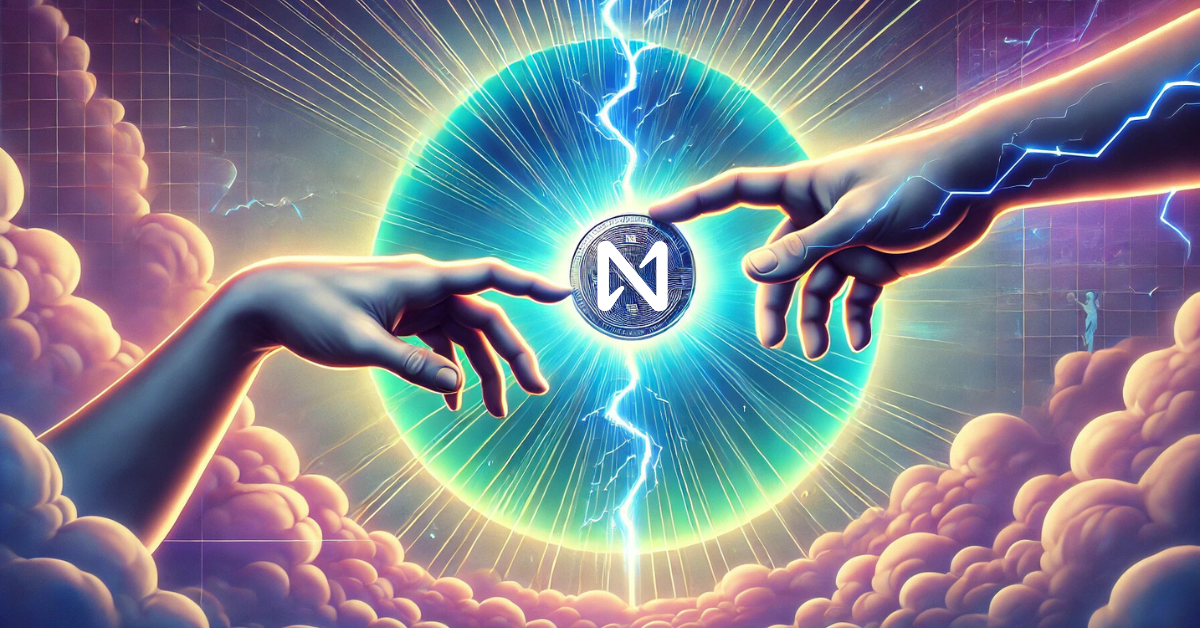Faster and borderless transactions were the core foundation of blockchain technology. After the inception of Bitcoin and the first blockchain, the rate of transactions has created a concern for digital finance enthusiasts. This is where the role of the NEAR Protocol comes in handy.
As scalability is the rate of transactions per second, it must be higher to convince the world about the digital currency ecosystem. People are already skeptical about cryptocurrency. And if it doesn’t offer a unique value proposition, why would someone want to trust it with their assets?
Thus, the NEAR Protocol came forward in 2020 with an outstanding solution for scalability through sharding. Crypto sharding is when you divide the flow and flux on a blockchain into manageable pathways or shards.
This article will cover everything comprehensively about:
- What is the NEAR Protocol?
- NEAR Protocol’s Nightshade for scalability
- NEAR Protocol’s native crypto token NEAR,
- Use cases and benefits of NEAR sharding
We will cover each aspect of the NEAR Protocol. So read on to acquire the relevant knowledge to take your blockchain experience to a new height.
NEAR Protocol: Overview
Are you a crypto enthusiast or blockchain developer who dreams of an exceptional platform? A platform that puts you in the driver’s seat? Where you don’t have to go deep pockets and have more headaches? If yes, look nowhere else as NEAR network is what you are looking for.
NEAR Protocol is a developer-friendly blockchain network with a mission to transform web3 and decentralized applications (dApps) through scalability. It is a place that micromanages everything for you so you can focus on creating intuitive and extraordinary solutions.
Erik Trautman, Alexander Skidanov and Illia Polosukhin are the masterminds behind NEAR Network development. They have ensured that blockchain enthusiasts feel no lack of a good platform.
For instance, the ideal ecosystem for developers, an impactful consensus mechanism called DoomSlug, and a vibrant community are the top highlights of NEAR blockchain for its users.
Understanding Scalability in Blockchain
As we already mentioned, scalability means how capable and efficient a blockchain network is when it comes to handling large numbers of transactions. When Bitcoin pioneered the cryptocurrency and Ethereum followed, everyone dreamed of a faster and more reliable financial system.
Though cryptocurrency and Decentralized Finance (DeFi) improved the monetary matters to the best, it lagged in scalability. According to Binance Academy, the transactions per second (TPS) of Bitcoin is around 5. For Ethereum 1.0, this rate was about 12 to 15 TPS.
This is a limiting factor for the mass adoption of blockchain technology. However, Ethereum worked on it and fixed this loophole with the introduction of Ethereum 2.0. Ethereum 2.0 is all about scalability. NEAR Protocol stands out in this endeavor due to its unique scalability solution.
You may wonder why scalability is such an enormous problem. The answer is the increasing popularity of blockchain and digital currencies. This results in increasing traffic on the blockchain. This causes delays and higher transaction costs, which is bad for your financial strategy.
Sharding: The Solution to Scalability
Now that you have understood the importance of scalability with a flair of Ethereum 2.0, the question is how NEAR blockchain offers scalability to its users. The answer is its effortless and cost-effective solution, known as sharding.
Sharding in blockchain technology is a term that defines the technique of dividing blockchain traffic pathways into multiple segments. These smaller and more controllable segments are shards. Just like a blockchain stores data in blocks, the data is transferred through shards in small packets.
The best aspect of sharding is that they go parallel and simultaneous so that a transaction happens completely. You can understand sharding more effectively with this example:
For instance, a small road passes through a town. The usual flux of traffic is low. Thus, it makes no problem but any festival or higher flux of traffic results in traffic jams. The simple solution is to create another road parallel to this one. Thus, the traffic will divide and traffic jams won’t happen. This is what we call sharding in blockchain technology.
Curious about Stellar Coin connecting economies? Learn more about it.
How Many Types of Sharding Are There in Blockchain Technology?
As easy as it sounds, implementing sharding techniques in a blockchain is complex. Based on its features and benefits, sharding has multiple types. An organization or blockchain network can implement various methods as per their demands and requirements.
Here are the top three types of sharding that offer the most value to a blockchain company.
- Compute Sharding: This is one of the most complex ways of sharding. In compute sharding, the blockchain workload is divided according to the number of transactions. It creates multiple nodes or data-storing servers. However, a single shard validates and verifies the data of a block, which is then shared with every node on the blockchain network. Thus, various shards participate in validation and consensus and it needs top-notch communication for proper functionality.
- Network Sharding: Another name for network sharding is functional sharding based on its working. It works with multiple subnets or a single blockchain that has robust communication. More than a single validator validates transactions to keep the complete state. Thus, the workload of validation is divided among multiple validators but the security and global consensus can become an issue with this sharding method.
- State Sharding: This is the most complicated sharding type as it assigns different shard addresses to a set of validators. A specific number of block addresses goes for validation with equal and optimized division of labor. This improves scalability to a greater extent. But it also introduces problems for transactions that are assigned to numerous shards.
Why Is Sharding Important for Blockchain Networks?
For every blockchain, there are three crucial factors to consider. That includes:
- Security
- Scalability
- Decentralization
The issue is that not a single blockchain can maintain these three factors at the same time. Because if they enhance security, scalability and decentralization will suffer. And the same goes for the rest of them.
Therefore, sharding offers the most up-to-date solution for such a problem. With this method, a blockchain company segregates and splits the entire workload into many blockchains. Each blockchain has its segments or shards for storing transaction records manageably. It eases validation and consensus.
Consequently the company can get higher scalability, more transactions, and less platform fees. This attracts miners, investors, and blockchain developers. So, sharding is a win-win for both consumers and companies.
Explore the privacy fast cryptocurrency, Zcash.
NEAR Protocol’s Approach to Sharding
Given the numerous benefits that blockchain technology offers to businesses and individuals, Statista reflects that businesses have adopted blockchain at a 10% rate. The higher adoption of blockchain means more transactions and higher demand for validators.
Given this gap in the crypto market, developers of NEAR crypto saw an opportunity. Launching their blockchain network, which is NEAR Collective, paved the way for developers, blockchain users, and crypto enthusiasts to benefit from a secure, decentralized, and highly scalable platform.
NEAR Collective stepped ahead and introduced sharding techniques. However, NEAR’s sharding is unique and more efficient than others, such as Ethereum 2.0. It is due to its distinguished design and functionality of Nightshade.
Nightshade: NEAR Protocol’s Approach to Blockchain Sharding
One key difference between NEAR blockchain and other blockchains bringing scalability is its approach. Other blockchains use side chains with the main blockchain to process transactions faster. On the flip side, NEAR Collective is using the Nightshade approach that runs on chunks or parallel shards to offer scalable and faster validation for transactions.
Nightshade is the sharding mechanism that the NEAR Protocol introduced in 2021. Instead of keeping the nodes forever untouched, Nightshade’s core function is to upgrade and improve the functionality of its sharding approach. This way, the validation of transactions becomes efficient which cuts off the unwanted slowness and increased gas fees of a blockchain.
By providing unmatched performance, decentralization, and security to NEAR blockchains, Nightshade is the golden ticket for a fully shard NEAR Protocol. Provided that, applications built on top of NEAR Collective will be irreplaceable and out of competition for centralized financial solutions, such as Visa, American Express, and many others.
Click here to learn about Filecoin, which is a decentralized data storage network.
Nightshade Vs Layer-2s
Before we dive deeper into explanations of Nightshade vs Layer-2 scaling approaches, it is essential to note that Layer-2s are the scalability solutions for Layer-1 blockchains, such as Ethereum, Solana, etc.
Layer 2 is a side chain built atop the existing blockchain like a branch. The connection between the Layer-1 blockchain and Layer-2 (L2) is off-chain known as optimistic rollups. Optimistic rollups function on zero-knowledge proof to validate the state of a blockchain. Ethereum is the first major organization to adopt this scaling approach.
On the other hand, NEAR’s Nightshade is a similar concept to optimistic rollup but it works parallel to the main blockchain. It spreads the validation control among multiple validators which improves the speed and performance of transactions.
In L2 scaling, composability and connectivity between chains can be a disastrous problem for transactions. Nightshade avoids such shortcomings. Since every node is connected and interoperable, NEAR Protocol users are mentally peaceful in deployment. They don’t need a third-party bridge for interconnecting blockchains and shards.
Technical Implementation of Sharding in NEAR
According to NEAR Collective, it is not just a blockchain network. In other words, NEAR is a complete operating system for blockchain developers and crypto users.
It is on a mission to introduce a new Internet with a well-secured layer for browsing and exploring the open web in a blockchain ecosystem. NEAR’s effort to make it convenient for users and developers of any blockchain to benefit from its operating system makes it a top choice in the blockchain industry.
This business objective is due to the magnificent technical implementation and infrastructure of NEAR Network. Below is a list of things that make this blockchain organization inevitable.
1. Architecture of NEAR Protocol
The architecture of the NEAR blockchain is a sharded architecture for the higher scalability of transaction throughput. It is also a stateful blockchain which means that a state is linked to each block on a blockchain.
Moreover, the consensus mechanism of the NEAR Protocol is called DoomSlug. DoomSlug is the delegated proof-of-stake consensus mechanism that allows users to become validators by staking crypto or native crypto token, NEAR crypto.
The delegated PoS consensus means that if a person doesn’t have adequate resources, including capital and computation power to stake and validate transactions, someone else does it on their behalf with certain incentives.
2. Roles of Validators and Fishermen
Validators and fishermen are essential terms to understand the security and transaction verification of the NEAR Network. Simply put, validators are stakeholders on a blockchain network tasked with validating and adding new blocks to an existing blockchain.
On the contrary, fisherman is a technical term coined by the Polkadot blockchain. It means a complete node on the blockchain with the ability to monitor the network and alert the validators about any unwanted or social engineering attempts.
NEAR Protocol is top-notch because of well-established validators and fishermen. This makes the network, applications, and everything on the network safeguarded from hackers and scammers.
3. Cross-Shard Communication
NEAR Protocol builds shards parallel to the main blockchain. Thus, there exist no side chains which makes it communicate effortlessly. It is known as a homogenous sharding mechanism or NEAR’s Nightshade.
The best thing about this method is that applications built on the NEAR blockchain are mutually connected and can communicate even if they are built on different shards. This process is called cross-shard communication.
Thus, developers and users of NEAR Protocol enjoy composability and interoperability. It also attracts users of other blockchains, such as Ethereum, Polkadot, Solana, etc., to benefit from a fully-sharded and scalable blockchain solution.
4. Dynamic Re-Sharding
Sometimes when the workload on a shard increases, it can become a bottleneck for the entire network. This approach of sharding is static sharding that can result in multiple problems. That includes:
- Network congestion,
- Transaction latency,
- Weak throughput,
- Higher transaction costs, etc.
NEAR Protocol offers dynamic resharding to tackle and avoid such concerns. Dynamic resharding is when the blockchain reacts dynamically to increased traffic and workload by increasing shards. Thus, users enjoy smooth runtime and concurrent transactions.
NEAR Crypto: NEAR Protocol (NEAR)
Whether you are a blockchain developer or crypto investor, you can enjoy the full features of NEAR blockchain only with its native token. NEAR Protocol or NEAR is a crypto coin that can allow you to become a stakeholder or validator on the network.
Moreover, NEAR is your ticket for making transactions on the blockchain as well as storing the record on its decentralized ledger. On top of that, NEAR is one of the best-performing crypto tokens.
For a long time, it attracted plenty of day traders and investors to make financial gains with NEAR tokens. Because of the supreme blockchain functionality NEAR Collective offers to users and developers, you can get high returns on investments off NEAR crypto.
Read about MANA coin, which is the currency that powers decentraland’s metaverse.
Tokenomics of NEAR
NEAR blockchain has well-established economic mechanisms that ensure that investors and NEAR token traders gain significant revenue. The Initial Coin Offering (ICO) or genesis phase of NEAR happened in 2020 with an initial supply of 1 billion NEAR tokens.
The supply distribution of NEAR goes to multiple areas. You will understand it very well through the following list:
- Community grants = 17.2%
- Seed round = 15.23%
- Core contributors = 14%
- Early ecosystem = 11.76%
- Operations grants = 11.4%
- Community sales = 12%
- Foundation endowment = 10%
- Venture round = 8.41%
The current total supply of NEAR is around 1.203 billion due to a 5% annual increase from the NEAR Collective. NEAR Protocol is also a lucrative venture for investors due to its enormous market capitalization of $5.160 billion as of now.
Where to Buy NEAR Crypto?
NEAR is among the top-performing cryptocurrencies globally. It reflects its availability on leading crypto exchanges, including:
- Binance,
- Bybit,
- Coinbase Exchange,
- Huobi Global,
- OKX,
- Mandala Exchange, etc.
You can buy NEAR using fiat currency as well as stablecoin like Tether (USDT). You can explore further about high volume exchange on our website.
NEAR Protocol’s Real-World Applications
Contributing to the crypto ecosystem, NEAR blockchain has revolutionized blockchain and web3 with its applications and use cases. Covering each and every use case in this guide will be an injustice due to their versatility and benefits.
However, we have mentioned the most significant ones. Here they are:
1. Decentralized Finance (DeFi)
As a business objective to develop an open web or the new internet, NEAR Network considered advancing decentralized finance as its high priority endeavor. DeFi refers to applications and services with zero intervention from authoritative third parties.
In the case of financial transactions, centralized systems have the validation and interference from banks and governments. However, decentralized finance has enhanced security and protection by handing over the control to owners of the DeFi assets.
Want to learn decentralized oracle networks? Read about Chainlink crypto.
NEAR DeFi projects include Proximity, Ref Finance, Flux Protocol, etc. The purpose of these projects is to elevate the outcomes of DeFi products and services.
2. Non-Fungible Tokens (NFTs)
In the DeFi ecosystem, non-fungible tokens (NFTs) have offered an incredible opportunity to intuitive artists and creative workers. Thanks to blockchain technology, ownership and reservation of intellectual property rights are no more a hard nut to crack.
NEAR blockchain has initiated a few projects for the next-level production, distribution, and monetization of unique content for digital creators. That includes:
- Mintbase: A high-quality utility NFT engine with a suite of tools for digital creators.
- Paras: A top-tier NFT marketplace where value proposition is the priority for NFT creators and buyers.
- Satori: A one-of-a-kind platform for content creators and artists to enjoy the perks of cryptocurrency and blockchain-based opportunities.
- Few & FAR: Another top-notch and high-volume decentralized marketplace for NFTs and digital creators to connect to the right audience.
3. Decentralized Autonomous Organizations (DAOs)
In recent years, the Decentralized Autonomous Organization (DAO) has emerged enormously. In this revolutionary concept, the corporate hierarchy never exists due to its blockchain basis. It means that there exists no position of CEOs, Managers, etc.
The members of a blockchain network manage the entire organization with shared values. In the case of NEAR, guilds refer to the positions of blockchain members who manage certain departments. For instance, Managing Guild, HR Guild, etc.
DAO projects on NEAR blockchain are:
- Astro: A one-stop-shop solution for DAOs to gather, govern and boost your DAO community.
- Sputnik DAO: If you want to create your DAO, Sputnik DAO is your go-to launch pad for decision making and fund management of your community.
- Guilds: It is the native community of the NEAR ecosystem which is based on the DAO concept.
Conclusion: The Future of NEAR Protocol
NEAR Protocol has gained traction due to its unique and brilliant idea. With a sharding scaling approach, NEAR Network is bringing remarkable changes in the blockchain ecosystem. The cross-shard communication improves interoperability, creating a bridge between NEAR and other blockchains, especially Ethereum.
The Nightshade sharding approach coupled with its DoomSlug (Delegated PoS) consensus, the future of blockchain in terms of scalability is classy. As NEAR announced the introduction of Ethereum Virtual Machine (EVM), Ethereum developers can redeploy their dApps and smart contracts effortlessly.
Furthermore, Threshold Proof of Stake and User-Owned Artificial Intelligence are the coming ventures of NEAR Collective. These endeavors will pave the way for the limitless scalability and functionality of blockchain and cryptocurrency.
FAQs: NEAR Protocol
Why is scalability important for blockchains?
The scalability of blockchain is vital as it manages crypto transactions. If the transactions per second are lower, transaction costs and time will increase. Thus, scaling approaches like sharding, Layer-2 scaling, etc., help blockchain to avoid network congestion, slow transactions, etc.
How does NEAR Protocol sharding work?
NEAR Protocol uses the Nightshade sharding technique which cuts blockchain into tiny and manageable chunks. Each chunk runs parallel so that they are connected for interoperable and cross-shard communication.
What are the fundamental differences between traditional blockchain and sharded blockchain?
A traditional blockchain stores transaction records by adding blocks. Each block may have one or many validators. However, it takes time and high cost to effectively manage these transactions. Sharded blockchain creates parallel shards or chunks to make transactions efficiently.
How does the NEAR Protocol enable cross-shard communication?
The main blockchain is the global state and the chunks are shards. They are interconnected with mutual communication, also known as cross-shard communication. With this feature, developers enjoy the freedom to deploy a dApp on any shard because of this communication.
Is the NEAR Protocol secure?
The security of NEAR crypto is unquestionable due to its robust cryptographic techniques. The DoomSlug consensus mechanism uses two-step governance. Moreover, the effective role of validators and fishermen in the NEAR blockchain ensures high-level protection of the network against hackers and malicious actors.






